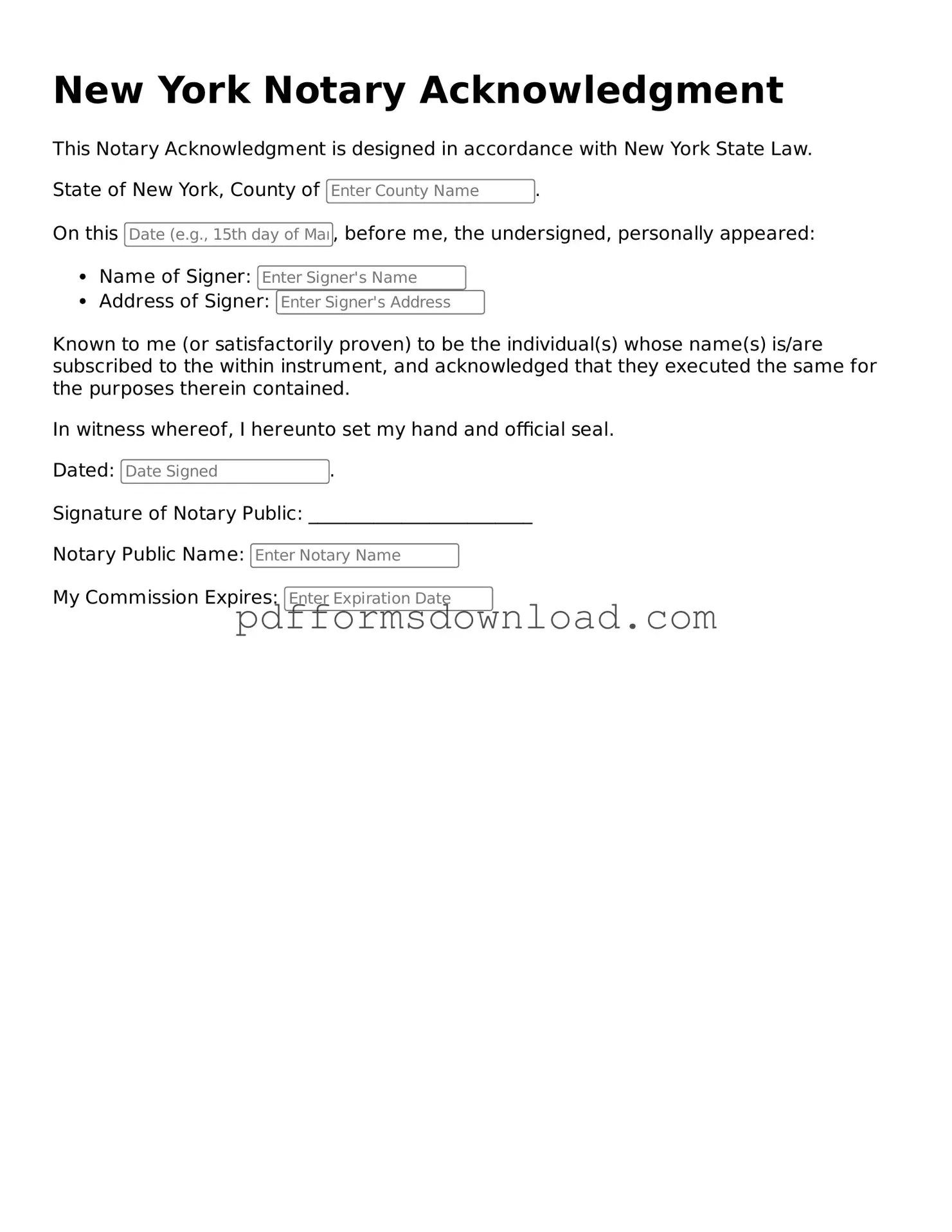What is a New York Notary Acknowledgement form?
The New York Notary Acknowledgement form is a legal document used to verify the identity of individuals signing a document. It serves as proof that the signer appeared before a notary public, who confirmed their identity and willingness to sign. This form is often required for various legal documents, such as deeds, contracts, and affidavits, to ensure their validity and enforceability.
When is a Notary Acknowledgement form required?
A Notary Acknowledgement form is typically required when a document needs to be filed with a government agency or when it is necessary to provide proof of the authenticity of a signature. Common situations include real estate transactions, powers of attorney, and court documents. If you are unsure whether your document requires a notary acknowledgment, it is advisable to consult with a legal professional.
How do I complete a Notary Acknowledgement form?
To complete a Notary Acknowledgement form, the signer must appear in person before a notary public. The notary will ask for identification to verify the signer's identity. After confirming that the signer understands the document and is signing willingly, the notary will complete the acknowledgment section of the form. This includes filling in the date, the signer's name, and the notary's signature and seal. It is important that the signer does not sign the document until in the presence of the notary.
What should I bring when meeting with a notary?
When meeting with a notary, it is essential to bring valid identification that includes your photograph and signature, such as a driver's license or passport. Additionally, bring the document that requires notarization. Ensure that you have not signed the document beforehand, as the notary needs to witness the signing process to provide a valid acknowledgment.
Is there a fee for notarization in New York?
Yes, there is typically a fee for notarization services in New York. The maximum fee a notary public can charge for an acknowledgment is set by state law. As of October 2023, the fee is usually around $2 per signature. However, some notaries may charge additional fees for travel or other services. It is advisable to confirm the fee with the notary before your appointment.
